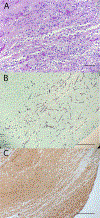Fungal keratitis: Mechanisms of infection and management strategies
- PMID: 34425126
- PMCID: PMC9206537
- DOI: 10.1016/j.survophthal.2021.08.002
Fungal keratitis: Mechanisms of infection and management strategies
Abstract
Fungal corneal ulcers are an uncommon, yet challenging, cause of vision loss. In the United States, geographic location appears to dictate not only the incidence of fungal ulcers, but also the fungal genera most encountered. These patterns of infection can be linked to environmental factors and individual characteristics of fungal organisms. Successful management of fungal ulcers is dependent on an early diagnosis. New diagnostic modalities like confocal microscopy and polymerase chain reaction are being increasingly used to detect and identify infectious organisms. Several novel therapies, including crosslinking and light therapy, are currently being tested as alternatives to conventional antifungal medications. We explore the biology of Candida, Fusarium, and Aspergillus, the three most common genera of fungi causing corneal ulcers in the United States and discuss current treatment regimens for the management of fungal keratitis.
Keywords: Confocal microscopy; Fungal; Keratitis; Keratolysis; Yeast.
Copyright © 2021. Published by Elsevier Inc.
Figures




References
-
- Gower EW, Keay LJ, Oechsler RA, et al.: Trends in fungal keratitis in the United States, 2001 to 2007. Ophthalmology. 2010; 117:2263–2267. - PubMed
-
- Garg P, Roy A, Roy S: Update on fungal keratitis. Curr Opin Ophthalmol. 2016; 27:333–339. - PubMed
-
- Kredics L, Narendran V, Shobana CS, et al.: Filamentous fungal infections of the cornea: a global overview of epidemiology and drug sensitivity. Mycoses. 2015; 58:243–260. - PubMed
Publication types
MeSH terms
Substances
Grants and funding
LinkOut - more resources
Full Text Sources

